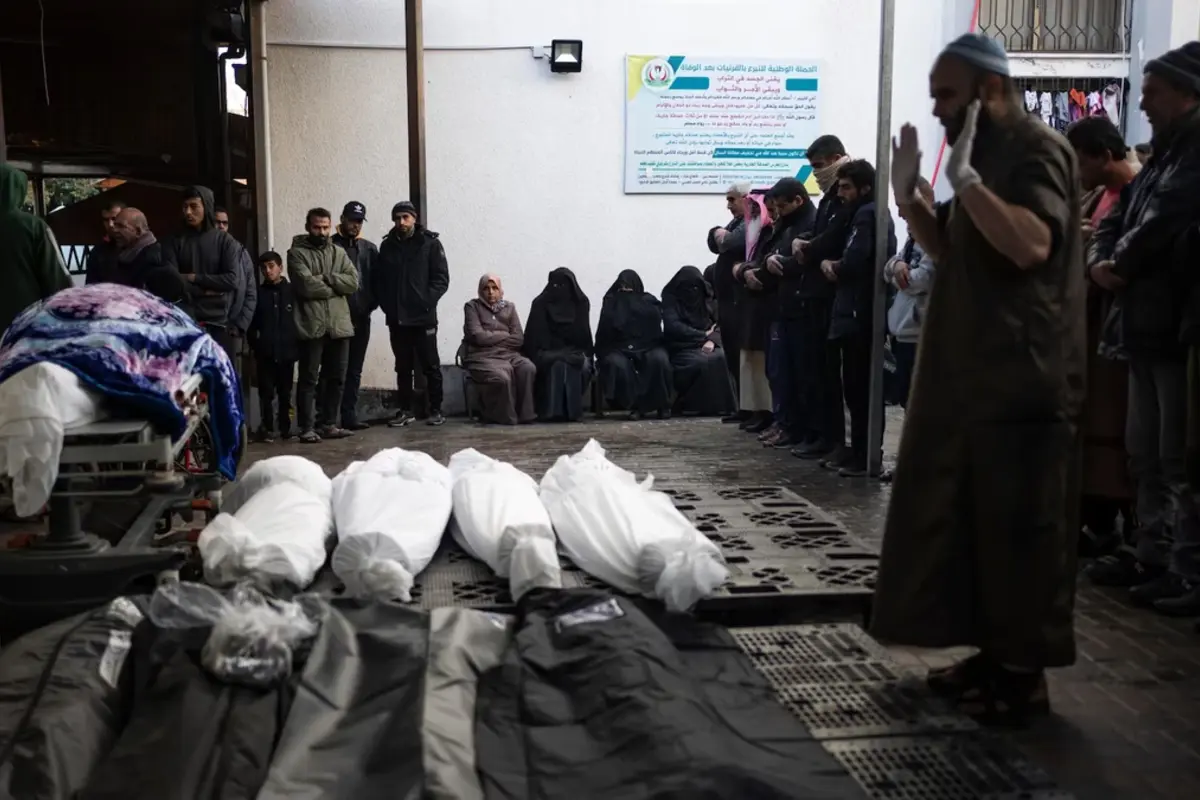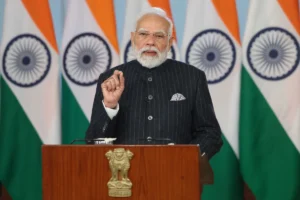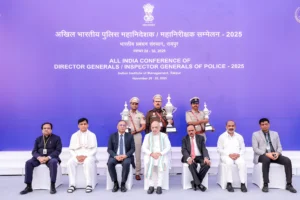
Israeli forces battled Palestinian militants on Wednesday near the main hospital in Gaza’s second-largest city, where medics said hundreds of patients and thousands of displaced people were trapped by the fighting.
Israel has ordered residents to leave a swath of downtown Khan Younis that includes Nasser Hospital and two smaller medical facilities as the country pushes ahead with its 3-month-old offensive against Hamas. The United Nations humanitarian office said the area was home to 88,000 Palestinians and was hosting another 425,000 displaced by fighting elsewhere.
But the aid group Doctors Without Borders said fleeing was not an option for many. It said its staff was trapped inside Nasser with some 850 patients and thousands of displaced people because the surrounding roads were inaccessible or too dangerous. The hospital is one of only two in southern Gaza that can still treat critically ill patients, the group said. Gaza’s Health Ministry also said the facility had been isolated.
Israeli Prime Minister Benjamin Netanyahu has vowed to press ahead with the offensive until “complete victory” against Hamas, which started the war with its October 7 assault across the border, killing some 1,200 people in Israel and abducting another 250.
FIGHTING IN KHAN YOUNIS, AND BEYOND
The Israeli military said its forces were battling militants inside Khan Younis after encircling it a day earlier. Military officials said aircraft were striking targets as part of the operations there and had also targeted suspected militants in central and northern Gaza.
The United Nations agency for Palestinian refugees said nine people were killed when a UN training centre in Khan Younis where 800 people were sheltering was struck by tank rounds, according to the agency’s Gaza director, Thomas White.
The agency said the same site was also hit earlier this week, killing six. The Israeli military had no immediate comment. Israel says Hamas militants operate in the area of UN facilities, as well as in other civilian structures.
Thousands of people fled south Tuesday from Khan Younis toward the town of Rafah. The UN says some 1.5 million people — around two-thirds of Gaza’s population — are crowded into shelters and tent camps in and around Rafah, which is on the border with Egypt.
Even there, Palestinians have found little safety, with Israel regularly carrying out strikes in and around the town. At least five people were killed when a strike hit a mosque Wednesday in Rafah, according to Associated Press journalists who viewed the bodies at a nearby hospital.
Palestinian witnesses said that in recent days Israeli soldiers and tanks had pushed into parts of Muwasi, a sandy area along the coast that Israel had declared a safe zone. Tens of thousands of people were living there in tents without basic services.
In all, some 1.7 million people have been displaced within Gaza, according to the UN Palestinian refugee agency. Most have fled from the north, where Israel’s air and ground offensive has reduced entire neighborhoods to shelled-out wastelands, raising the question of whether residents will ever be able to return.
At least 210 Palestinians have been killed in the last 24 hours, bringing the total death toll from the war to 25,700, according to the Health Ministry in Hamas-run Gaza. Its count does not differentiate between civilians and combatants, but it says most of the dead are women and children.
UN officials have expressed fears that even more people could die from disease, with at least one-quarter of the population facing starvation.
ISRAELI DIVISIONS OVER WAR AIMS
In addition to defeating Hamas, Netanyahu says Israel is also committed to returning the over 100 hostages that remain in captivity after most of the others were freed during a November cease-fire.
But many Israelis, including at least one member of Netanyahu’s War Cabinet, say that’s impossible without reaching another agreement with Hamas. And the militant group says it won’t release any more hostages until Israel ends its offensive.
Egypt and Qatar are working on a new agreement, but officials say the gap between the two sides is still wide.
Meanwhile, bitter political divisions that were set aside after the October 7 attack have begun to reemerge, with Netanyahu facing widespread protests over the failure to prevent the attack and the plight of the captives. Relatives of the hostages interrupted a parliamentary committee meeting Monday.
A BUFFER ZONE IN GAZA?
Hamas is still attacking Israeli forces, even in some of the most devastated areas, and firing rockets into Israel. An attack Monday near the border killed 21 Israeli soldiers as they were preparing explosives for a controlled demolition. It was the military’s biggest loss of life in a single attack since October 7.
Israeli media said the troops were working to create an informal buffer zone about a kilometer (half a mile) wide along the border to prevent militants from attacking Israeli communities near Gaza. Two TV channels ran footage showing what appeared to be a controlled demolition of several structures near the border, which the broadcasters said was done in the area of the attack.
Satellite images from Planet Labs PBC taken last Saturday — before the attack — appeared to show the uniform destruction of buildings and agricultural fields in the area.
Military spokespeople have not used the term “buffer zone,” but say troops are uprooting militant infrastructure near the border to provide security for Israeli communities on the other side.
The United States, which has provided essential military and diplomatic support for the offensive, has said it is opposed to any attempt by Israel to shrink Gaza’s territory.
But President Joe Biden’s administration has also urged Israel to scale back military operations and facilitate the delivery of more aid — with limited success. Netanyahu has outright rejected calls from the US and much of the international community for postwar plans that include the eventual creation of a Palestinian state. (AP).
Source: PTI
To read more such news, download Bharat Express news apps


















